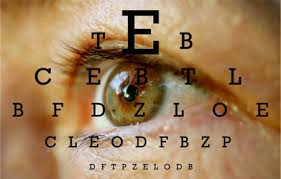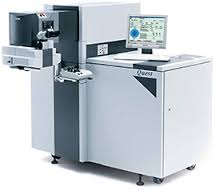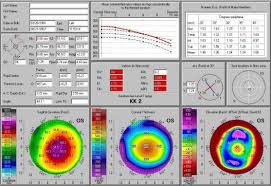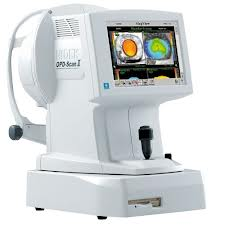Refractive surgeries (LASIK Laser for Removing Glasses)
What are the various refractive surgeries?
 The refractive power of the eye can be changed by any of the three approaches:
The refractive power of the eye can be changed by any of the three approaches:
-
-
-
- Changing the curvature of the cornea: this is the most popular mode of refractive surgery.
- Removing the natural lens and replacing it with an artificial lens of adequate power: it is similar to a routine phacoemulsification surgery, except that it is done in a clear lens and not a lens with cataract. As it is an invasive procedure and it also increases the chances of retinal detachment in eyes with high myopia, it is not recommended nowadays.
- Putting an additional artificial lens within the eye on top of the existing natural lens: this technique is still not very popular as it is also invasive and may increase the chances of cataract formation.
-
-
What are the ways of changing the curvature of cornea?
The commonly used methods for refractive surgery are:
- PhotoRefractive Keratotomy (PRK) : It is being used less commonly nowadays.
- Laser-Assisted In-Situ Keratomileusis (LASIK) :This is the most popular form of Laser treatment.
- LASEK (or Epi-LASIK) :This newer form of treatment may be suitable in some selected patients with very high power.
 What is Excimer laser?
What is Excimer laser?
Excimer laser is a far Ultra Violet (UV) light energy of wavelength 193 microns. It is invisible to human eye. This laser breaks the chemical bonds within the molecules (photoablation) with minimal thermal damage to the surrounding tissues. Thus it is very precise and can remodel the cornea with an accuracy of more than a thousandth of a millimeter.
How does Excimer laser correct the refractive error?
The effect of excimer laser on the cornea is very similar to grinding of a glass lens to change its refractive power. In eyes with refractive errors, excimer laser because of its high level of precision, can change the shape of the cornea to change its refractive power to the desired state and thus correcting the refractive error.
In myopia, the central part of the cornea is made flatter, and thus decreasing the refractive power of the cornea and of the eye, and thus correcting the refractive error. Similarly in hypermetropia, the laser removes a ring of tissue from the peripheral part of the cornea and thus makes the central part steeper and corrects the refractive error. As we know, in astigmatism, the cornea is more curved in one direction. Excimer laser can correct astigmatism also by selectively ablating the cornea in the required direction. What is LASIK?
What is LASIK?
LASIK involves putting the PRK treatment not on the surface of the cornea, but under a protective corneal flap. A very thin (about 0.16 mm) and precise flap is raised by a special instrument known as microkeratome. The result is a corneal flap attached at one edge, the hinge. The surgeon folds the flap to expose the inner stromal layer of the cornea. The excimer laser treatment is applied on this stromal bed to remodel it. After this the flap is repositioned to its original position and it does not require any suture. Since the corneal epithelium has only been minimally disturbed, there is only mild discomfort after the procedure.
 What is Customised LASIK?
What is Customised LASIK?
This is a special form of LASIK in which the treatment parameters are customised for the particular patient, based not only on the refractive error, but also on the corneal map of the eye and other findings detected by special tests. This procedure tries to correct aberrations, maintains normal shape of the cornea and gives better night vision.
Who is a suitable candidate for LASIK laser surgery?
The person must be 18 years or older with a stable power. A contact lens user must discontinue the use of contact lenses at least 2 weeks before the procedure. A detailed eye checkup is done to look for suitability for the procedure. Before the Laser is done the eyes are checked with special machines to determine the exact power, the corneal mapping is done and corneal thickness is measured. In patients with high minus power, a special retinal checkup is done for detecting any possible weak areas in the retina, which may need to be treated before the LASIK is performed. The LASIK laser is performed only after ruling out any contraindication and confirming the suitability of the procedure.
What happens during the Laser surgery?
The LASIK surgery is done as an outpatient procedure and does not require any admission. It is painless and is done after putting the anesthetic drops and does not require any injections. The laser procedure takes approximately 15-20 minutes for both eyes. After the procedure, the patient can go back home after 20-30 minutes.
What are the complications of LASIK?
LASIK is a very safe procedure with a majority of patients achieving very good results. However, since it is a surgical procedure, it does carry some chances of complications as well, which would be discussed with you before the surgery. The overall rate of significant complications in LASIK is only of the order of 1-2%. Some of these complications may be:
- Undercorrection or Overcorrection
- Glare and difficulty in night driving
- Flap complications, perforation
- Infection
- Scarring of the cornea
 What are the precautions to be followed after LASIK, and when can one resume work?
What are the precautions to be followed after LASIK, and when can one resume work?
After LASIK surgery one needs to avoid using cosmetics in and around the eye for a week or two. One should also avoid wetting or rubbing the eyes for some period. Use the medications regularly and report immediately in case of any discomfort, redness, injury or any other problem. There is no restriction in reading, watching TV, going for walks etc. In majority of cases, routine office or simple household work may be resumed in a day or two.
